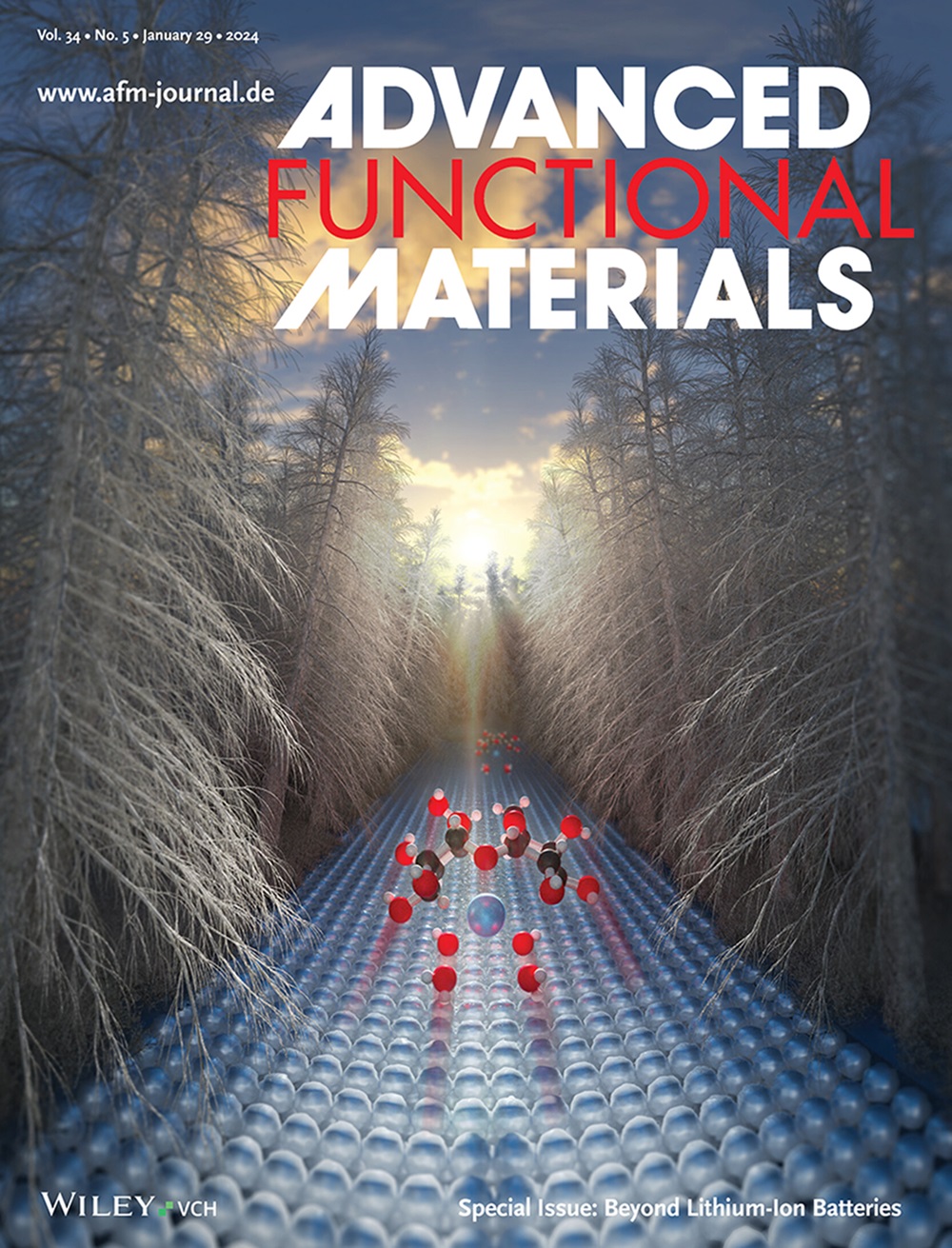Anionic COF Aerogels for Selective Pollutant Removal and Ultrasensitive SERS Detection
IF 19
1区 材料科学
Q1 CHEMISTRY, MULTIDISCIPLINARY
引用次数: 0
Abstract
The simultaneous removal and real‐time monitoring of organic pollutants in complex water matrices remains challenging due to interference from coexisting substances and limitations in detection sensitivity. Here, an anionic covalent organic framework (COF)‐based aerogel (denoted as CCGA) is presented with both excellent selectivity and ultrahigh surface‐enhanced Raman scattering (SERS) detection sensitivity. The hierarchical architecture of CCGA synergistically integrates macroporous graphene scaffolds with micro‐mesoporous COF channels, facilitating rapid and selective capture of cationic dyes (>92% removal efficiency) via阴离子COF气凝胶用于选择性污染物去除和超灵敏SERS检测
由于共存物质的干扰和检测灵敏度的限制,复杂水基质中有机污染物的同时去除和实时监测仍然具有挑战性。在这里,阴离子共价有机框架(COF)基气凝胶(表示为CCGA)具有优异的选择性和超高的表面增强拉曼散射(SERS)检测灵敏度。CCGA的分层结构协同集成了大孔石墨烯支架和微介孔COF通道,通过π -π堆叠和静电相互作用,促进了阳离子染料的快速和选择性捕获(>;92%的去除效率),而对阴离子染料的亲和力可以忽略不计。这种基于气凝胶的富集策略使SERS检测痕量污染物低至1.65 × 10−5 mg mL−1罗丹明B (RhB)和2.27 × 10−6 mg mL−1孔雀石绿(mg)。此外,异质结减少了石墨氮化碳的带隙,促进了可见光驱动的光催化降解,允许气凝胶在9个循环中自我再生。CCGA展示了实用性,在处理复杂的阳离子污染物方面具有多功能性,并通过便携式过滤系统在实际废水基质中有效运行。这项工作通过整合选择性吸附、分子水平检测和太阳能驱动再生策略来推进多功能材料的设计,为下一代水修复技术提供了可扩展的方法。
本文章由计算机程序翻译,如有差异,请以英文原文为准。
求助全文
约1分钟内获得全文
求助全文
来源期刊

Advanced Functional Materials
工程技术-材料科学:综合
CiteScore
29.50
自引率
4.20%
发文量
2086
审稿时长
2.1 months
期刊介绍:
Firmly established as a top-tier materials science journal, Advanced Functional Materials reports breakthrough research in all aspects of materials science, including nanotechnology, chemistry, physics, and biology every week.
Advanced Functional Materials is known for its rapid and fair peer review, quality content, and high impact, making it the first choice of the international materials science community.
 求助内容:
求助内容: 应助结果提醒方式:
应助结果提醒方式:


